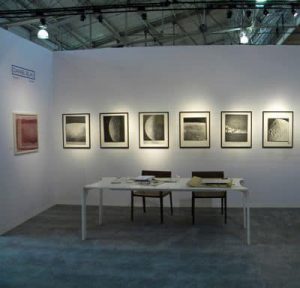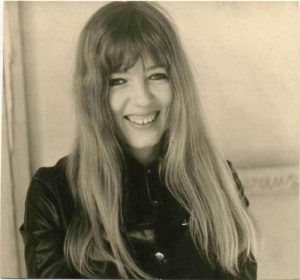Month: July 2011
September 15, 2011 — September 18, 2011
186.283 mps
An exhibition of rare NASA photographs 1965 –1981.
Two great achievements in science have given us some of the most striking and memorable photographic images of the 20th century. The iconic pictures of the rising mushroom cloud were a visual testimony to the success of atomic tests. Space exploration gave us unforget-table views of Earth and Moon as seen from space (Apollo 8), as well as “Buzz” Aldrin’s footprint in Lunar soil. These pictures have become part of our visual memory. They are not simple snap-shots by an amateur, taken with a Kodak Box, but the result of the combined efforts of tens-of-thousands of workers and scientists.Some of these astronomically costly missions, Luna 3 for example, produced very few useful photographs, making each print absurdly expensive and ultimatly precious. These grainy pictures of the Moon from afar are strangely remeniscent of the Shroud of Turin and induce the same sense of wonder. Other missions resulted in an endless stream of photographs both in color and black and white, in negative and positive (Apollo XI). From 1945 through the early 1960’s the USA “flooded” the world’s press agencies with thousands of images of atomic tests. They were photographed in every possible way, keeping the audience continuously in awe; from the ground, from the air, under water, through a periscope, next to a zeppelin, at night, during the day or even “by invitation only.” As the Space Race became more of the public and media focus, photographs taken in space replaced the explosion pictures. Now it was the blast-off, the blue Earth, two space ships meeting in the void above Earth (Gemini), photos radioed back from rockets moments before impacting the Lunar surface (Ranger), pictures taken by radio controlled video cameras on the Moon, radioed back to Earth and reassembled here (Surveyor). One of the unmanned missions (Orbiter) asked for a complete dark room to be shot into space. It was a kind of photo-booth taking photos of the moon while orbiting it, developing the film, scanning the negative and radioing the data back to Earth. Here the signal was again transferred onto negative film from which the positive pictures were printed. The Orbiter probe eventually crashed on the Moon, thus destroying the original negatives. The successful landing of Apollo XI on the Moon changed all that; from July 1969 on we became used to focused and detailed photographs in colour. True, the pictures we received while the astronauts were still “out there” had the low quality of wire-prints. On the other hand, the Kodak films they brought back were crisp and “juicy” like tourist photos from Rome, the Grand Canyon or Palm Springs. The images of the atomic cloud, as well as those of the astronauts on the Moon were “tools” of propaganda for the American dream, demonstrating might and offering hope. In San Francisco at SF20/21, we are presenting a selection of significant vintage NASA photographs. Some of them are unique surviving examples of the Sisyphean task of assembling thousands of small photographs to fairly large mosaics of Moon-scapes (Surveyor). Others are important for their size or simply as rare survivors from a once important archive of prints that, within the last fifty years was dispersed, perhaps on account of digitisation or because it became technologically antiquated. Today we treasure these vintage prints for their artistic quality and as permanent visual evidence of a time when the future seemed so close.
Opening: September 15
Exhibition: September 16 –18, 2011
Festival Pavilion at Fort Mason Center San Francisco, CA 94123
Telephone at the booth: +49 / 172 / 74 84 999

September 1, 2011 – October 6, 2011
An exhibition of vintage, anonymous, vernacular and spirit photography, also including works by Fratelli Alinari, Cecil Beaton, René Barthélemy, Paul Berthier, Emil Cadoo, Louis Joseph Deflube, Arthur Conan Doyle, JH Engstrom, Walker Evans, Jean-Baptiste Frenet, Michael Grieve, Bill Jacobsen, Fritz Lang, Rut Blees Luxemburg, Charles Marville, Tina Modotti, Floris Neusüss, Arnold Newman, Diane Pernet, Leni Riefenstahl, Henri Sauvaire, Jeffrey Silverthorne, Edmund Teske, U.S. Army Picture Corps, Louis Vignes et al.
“They are moving because of their phantom condition; every act they execute may be their last; there is not a face that is not on the verge of dissolving like a face in a dream.”
Jorge Luis Borges
We are pleased to present a unique set of images that embody a theme particularly relevant to current artistic and cultural practice: that of the haunted, the blurred and the dissolved. To exemplify these themes this exhibition will feature vintage prints as well as more recent explorations in photography and its often-dissolute processes. In homage to the alchemy and chemistry of photography, this show will illustrate fire, smoke, the spirit, the x-ray, blur and motion, decay and the photogram. Like a series of dark objects and entities trapped behind the framing of glass, the gallery space becomes a chapel to the haunted history of the photographic medium.
Christa Dichgans was born 1940 in Berlin. She studied from 1960-65 at the Berlin Academy of Arts under Fred Thieler and worked as Georg Baselitz’s assistant from 1984 to 1988. She lived and worked in Berlin and La Haute Carpénée in Southern France.
Exhibitions and Distinctions (Selection)
2019
Galerie Daniel Blau, Munich
2014
Galerie Daniel Blau, Munich
2010
Galerie Daniel Blau, Munich
2006
Galerie Contemporary Fine Arts, Berlin
1997
Galerie Daniel Blau, Munich
1996
Artist group “Die Ecke”, Augsburg
1995-2000
Journeys through Russia and Asia
1995
Museé d’Art Moderne, Nice
Goethe Institut, Moscow
1985
Mannheim Art Association. Municipal Gallery Viesen
1981
Göttingen Art Association
1978-1979
82 etchings for the book “was – wenn/ was nicht/ wenn nicht”, published and commentated by “Y” (A.R. Penck), Galerie Springer, Berlin
1977
Galerie Springer, Berlin
1975
Lerner-Heller Gallery, New York
1974
Galerie Marzona, Bielefeld
1972
Galerie Springer, Berlin
1971
Residence at Villa Romana, Florence
1966-1967
DAAD scholarship in New York
1964-1967
German National Scholarship
Literature (Selection)
Christa Dichgans – Spielzeugbilder, Galerie Daniel Blau, Munich 2010
Christa Dichgans – King Kong Kisses, Contemporary Fine Arts, Berlin 2006
Christa Dichgans – Werke 1969 – 1998, Bern Berlin 2000
Christa Dichgans – Retrospektive, Städtische Galerie Viersen 1995
Christa Dichgans – Werke 1964 – 1991, ed. by Haus am Waldsee, Berlin 1992
Christa Dichgans – Bilder 1967-1972, Galerie Springer, Berlin 1972

July 7, 2011 – August 10, 2011
Daniel Blau Ltd. is pleased to present Neal Fox’s latest project Beware of the God. Fox’s drawings depict a phantasmagoric journey through the detritus and mythology of pop culture. From a life-long obsession with the tales of his dead grandfather, a World War II bomber pilot, writer and hell raiser, his large-scale drawings have developed into increasingly layered celebrations of the debauched and iconoclastic characters whose ideas have helped shape our collective consciousness.
Fox’s latest project takes many of the recurring subjects of his drawings and portrays them through the medium of the stained glass window. As traditional church windows show the iconography of saints, through representations of events in their lives, instruments of martyrdom and iconic motifs, Fox plays with the symbolism of each character’s cult of personality; Albert Hoffman takes a psychedelic bicycle ride above the LSD molecule, J G Ballard dissects the world, surrounded by 20th Century imagery and the eroticism of the car crash, and Johnny Cash holds his inner demon in chains after a religious experience in Nickerjack cave. One quality in particular binds these characters and the others together; a refusal to conform and conviction in their own ideology.
Working with traditional methods at the renowned Franz Mayer of Munich manufacturer, Fox is producing a set of twelve 2.5 metre high stained-glass windows; exhibited in a single room – an alternative church of alternative saints.





 +49 89 29 73 42
+49 89 29 73 42